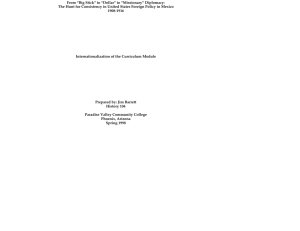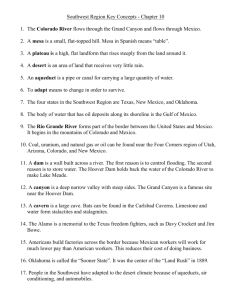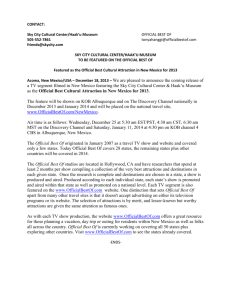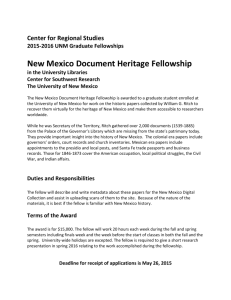Cities and Climate Change
advertisement
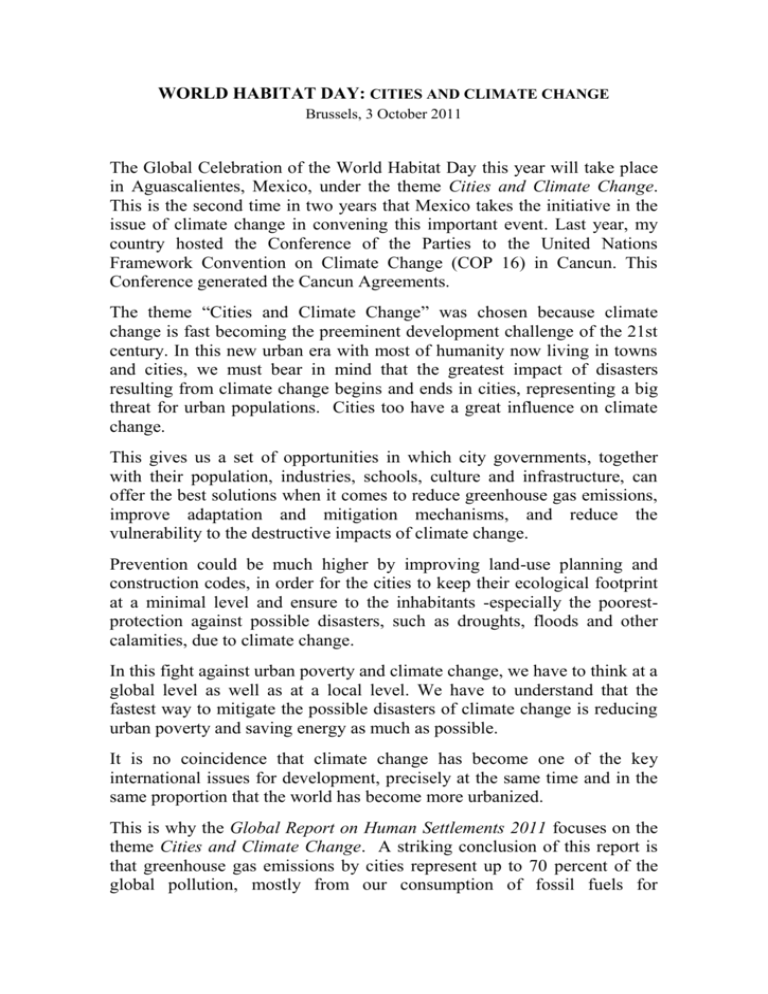
WORLD HABITAT DAY: CITIES AND CLIMATE CHANGE Brussels, 3 October 2011 The Global Celebration of the World Habitat Day this year will take place in Aguascalientes, Mexico, under the theme Cities and Climate Change. This is the second time in two years that Mexico takes the initiative in the issue of climate change in convening this important event. Last year, my country hosted the Conference of the Parties to the United Nations Framework Convention on Climate Change (COP 16) in Cancun. This Conference generated the Cancun Agreements. The theme “Cities and Climate Change” was chosen because climate change is fast becoming the preeminent development challenge of the 21st century. In this new urban era with most of humanity now living in towns and cities, we must bear in mind that the greatest impact of disasters resulting from climate change begins and ends in cities, representing a big threat for urban populations. Cities too have a great influence on climate change. This gives us a set of opportunities in which city governments, together with their population, industries, schools, culture and infrastructure, can offer the best solutions when it comes to reduce greenhouse gas emissions, improve adaptation and mitigation mechanisms, and reduce the vulnerability to the destructive impacts of climate change. Prevention could be much higher by improving land-use planning and construction codes, in order for the cities to keep their ecological footprint at a minimal level and ensure to the inhabitants -especially the poorestprotection against possible disasters, such as droughts, floods and other calamities, due to climate change. In this fight against urban poverty and climate change, we have to think at a global level as well as at a local level. We have to understand that the fastest way to mitigate the possible disasters of climate change is reducing urban poverty and saving energy as much as possible. It is no coincidence that climate change has become one of the key international issues for development, precisely at the same time and in the same proportion that the world has become more urbanized. This is why the Global Report on Human Settlements 2011 focuses on the theme Cities and Climate Change. A striking conclusion of this report is that greenhouse gas emissions by cities represent up to 70 percent of the global pollution, mostly from our consumption of fossil fuels for electricity, transport, commercial energy in buildings, production and wastes. The Report also shows the increasing evidence of the risks of climate change for urban areas and its impacts on growing populations, especially for water distribution, physical infrastructure, transport, goods and services, energy provision, industrial production and economy. The report aims to improve the knowledge about urban development and climate change including the cities’ contribution to this phenomenon and their impact on the cities. Even more importantly, it identifies promising mitigation and adaptation measures for a more sustainable and stronger urban development. The working program between Mexico and UN-HABITAT has been expanding since 2004, as a valuable support to Mexico’s commitment for improving significantly the lives of the slum dwellers, in line with the Millennium Development Goals. In Mexico, urban development is under permanent monitoring through an extensive National Network of Local Urban Observatories. The activities that are nowadays carried out in Mexico, with the support of UN-Habitat, are focused on the water and sanitation sector, urban planning and promotion of urban safety and coexistence in public spaces. We are currently developing a new program regarding sustainable urban mobility. Today´s celebration is very important to raise awareness about the importance of the urban dimension on the climate change. Together, we can do something for the future of our planet through the establishment of new measures to help, compensate, and mitigate the climate change crisis that we are facing.







